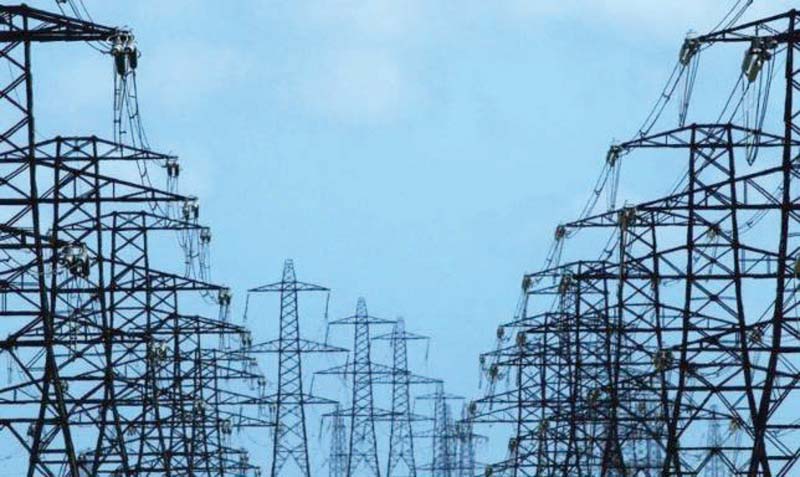
The Pakistan Muslim League-Nawaz (PML-N) kicked off its election campaign with a promise that it would end power outages in six months if the party came to power. Later, after winning the polls in 2013 and seeing the worsening shortages, it extended the deadline of eliminating outages to three years.
Yet again, the federal minister of water and power vowed to effectively tackle load-shedding by the year 2017. However, instead of committing a halt to the crippling power shortages, he said, “we will control load-shedding by the end of 2017 with the assistance of China by importing electricity.”
Another summer has come and old memories of hours-long blackouts, particularly in rural areas, have popped in the minds of people. With scorching heat gripping many cities, power cuts have come to haunt them. The only good sign is the uninterrupted power supply to the industry for the last four months.

An official of the Ministry of Water and Power argues that power plants are stretched to the maximum, but technical failure or faults lead to a temporary increase in load-shedding as has happened in the case of Uch power plant. The outages were also the result of refusal of the Indus River System Authority (Irsa) to increase water supply to hydroelectric power plants.
However, after repeated requests, Irsa increased water releases. The country’s hydroelectric power generation capacity stands at 7,100 megawatts, but on Friday production was just 2,400MW, though much better than the 1,100MW produced earlier.
“Overall, power generation peaks at around 12,800MW while demand rises to 16,700MW, a gap of 3,900MW that we can easily cope with by resorting to six to eight hours of power cuts,” the official said.
In the past, governments had been following such policies that could keep power generation at lower levels in an attempt to avoid a big subsidy bill. But the recent plunge in oil prices in the international market is a blessing in disguise for the government that can run power plants at maximum capacity.
Though the plants are still being operated at a low capacity, Water and Power Minister Khawaja Asif has promised to run them at the optimum level in summer months in order to generate 16,500MW.
However, according to officials, consumer demand will rise past 19,000MW, leaving a gap of 2,500MW between production and consumption. Domestic consumers, particularly the dwellers of rural areas, are feared to bear the brunt of power shortfall as the government would love to continue uninterrupted supply to the industry.
Another positive
Liquefied natural gas (LNG) is another blessing for the government this summer. The country has already received first cargo of LNG, which was provided to the power plants, especially those that were either running on diesel or were shut down.
The government has planned to provide LNG to these plants including Rosch, Halmore, Saif, Orient and Nandipur in order to increase power production and ease shortages.
Talking to The Express Tribune, Petroleum and Natural Resources Minister Shahid Khaqan Abbasi said the country had received the second LNG ship carrying 54,000 tons at a price of $8 per million British thermal units (mmbtu). “All sectors are sharing this imported gas,” he said.
However, Sui Northern Gas Pipelines Limited (SNGPL) and the Ministry of Petroleum are engaged in a tussle over LNG distribution. The gas utility has monopoly over the distribution process that has upset the private sector. The issue needs to be resolved in order to push the private sector to go for gas import.
LNG price
On the other hand, LNG is not proving to be cheaper as the government has allowed Sui Southern Gas Company (SSGC), Pakistan State Oil (PSO) and SNGPL to collect margins and service charges that has taken LNG price to more than $13 per mmbtu.
Owing to the high price, the power sector is reluctant to use LNG. In Indonesia too, the transporters were allowed to charge around $15 per mmbtu, which forced power producers to refuse to consume LNG.
Some experts suggest that LNG price in Pakistan has even exceeded the diesel rate and they ask why power producers will use imported gas when diesel is available at a lower price. These are the issues that the government has failed to address and these could create hurdles in the way of a smooth supply of electricity.
Even if power production rises, the country’s distribution system is not in a position to bear the load of more than 16,500MW. To boost its capacity, the government has already framed a policy for inviting the private sector to lay transmission lines. But there are no signs that the private sector has started working on it.
Keeping in view all these issues, people can only hope that the summer could be a little bit better this year because of the slump in oil market and LNG imports. Otherwise, there would be only promises and no relief for the consumers.
THE WRITER IS A STAFF CORRESPONDENT
Published in The Express Tribune, April 27th, 2015.
Like Business on Facebook, follow @TribuneBiz on Twitter to stay informed and join in the conversation.

















COMMENTS (7)
Comments are moderated and generally will be posted if they are on-topic and not abusive.
For more information, please see our Comments FAQ